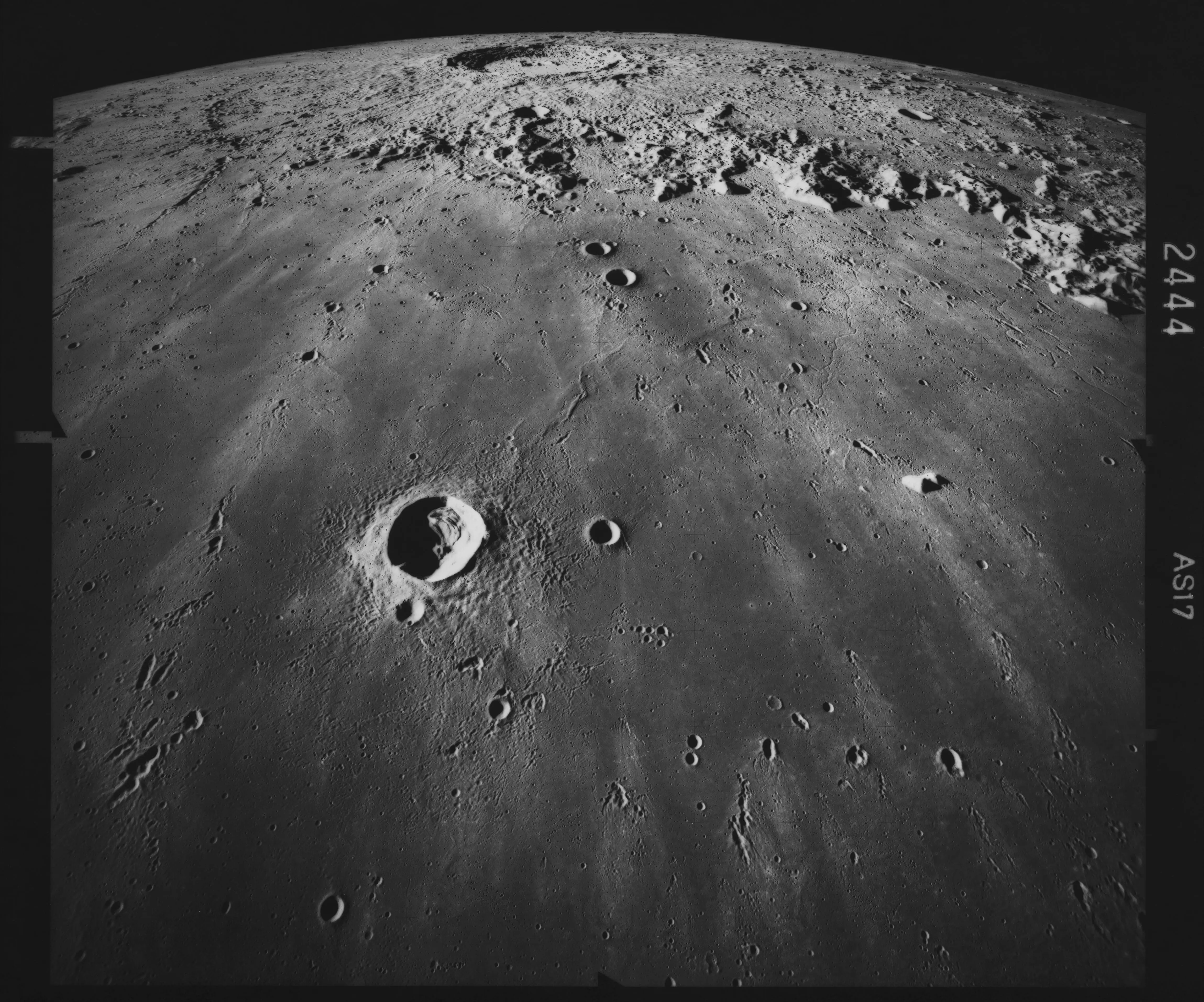Fact check: Did NASA really confirm Earth now has two moons? Viral claim explained
-
 Image of the lunar surface, looking south across Mare Imbrium, with the crater Copernicus (58 miles in diameter) visible in the distance, in an image of the lunar surface taken during the Apollo 17, 7th to 19th December 1972. Crater Pytheas (12 miles in diameter) is visible in the foreground, with several chains of small craters beyond, these are oriented toward Copernicus and are secondary craters produced by material ejected when Copernicus formed. (Photo by Space Frontiers/Archive Photos/Hulton Archive/Getty Images)
Image of the lunar surface, looking south across Mare Imbrium, with the crater Copernicus (58 miles in diameter) visible in the distance, in an image of the lunar surface taken during the Apollo 17, 7th to 19th December 1972. Crater Pytheas (12 miles in diameter) is visible in the foreground, with several chains of small craters beyond, these are oriented toward Copernicus and are secondary craters produced by material ejected when Copernicus formed. (Photo by Space Frontiers/Archive Photos/Hulton Archive/Getty Images)There has been a viral rumor going around on social media claiming that NASA has attested that Earth now features two moons. The rumor has spread rapidly on sites such as X (formerly Twitter), Facebook, and TikTok, where people have been posting sensational posts and videos asserting that researchers have found a "second moon" around our world.
Nevertheless, after verifying official sources and the latest scientific news, it seems this statement is false. NASA has not indicated that the planet has acquired a new permanent moon. The reality is far more normal, but very interesting and it has to do with what astronomers refer to as a "quasi-moon."
Where the claim came from
The misunderstanding is said to have begun with internet posts involving a minor asteroid called 2023 FW13. Some individuals took initial reports on the object out of context, which resulted in sensationalized headlines stating it was a second moon orbiting Earth.
In fact, 2023 FW13 is not really a moon like the one visible at night. It is a tiny space rock, approximated to be around 50 feet (15 meters) in diameter. This is what orbits the Sun in a similar trajectory to that of Earth. Due to this, it looks as if it moves together with our planet, creating the illusion that it revolves around Earth.
What scientists actually said
NASA and astronomers who have been monitoring the asteroid have confirmed that 2023 FW13 has been in a co-orbit with Earth for decades and will probably continue to do so for centuries. It is one of a rare category of celestial objects designated as "quasi-satellites.
They are not caught by the gravity of Earth like our Moon. Rather, they and Earth move in a synchronized orbit about the Sun, so that they remain relatively close but not actually orbiting our planet.
In a statement to explain the commotion, scientists explained that Earth still only has one natural moon — the same Moon that illuminates our nighttime sky. Although quasi-moons such as 2023 FW13 pass close by every now and then, they are temporary companions, not permanent satellites.
What is a quasi-moon
A quasi-moon is an asteroid or body that circles the Sun at approximately the same velocity as Earth. For this reason, it appears to linger near our world from some viewpoints, but it is not gravitationally bound to Earth.
There have previously been a few such objects. Indeed, astronomers have spotted some quasi-moons in the past, such as 2016 HO3, which has been orbiting close to Earth for at least 100 years and will likely continue to do so for many more centuries.
These asteroids pass through and are not near Earth, and though they seem close, they do not threaten anything. Their trajectories are reliable and well-monitored by NASA and other space organizations.
NASA has not actually announced that Earth now has two moons, as social media claims. The viral news misinterprets genuine scientific data about a not-so-harmless near-Earth asteroid.
Earth continues to have one true natural satellite — our Moon — while many lower objects like 2023 FW13 move along in analogous paths around the Sun. They're occasionally called “ mini moons ” or “quasi-moons, ” but they don’t change the fact that Earth’s only real moon remains the same bone we’ve always known.
So, though the notion of an alternate moon is appealing, reality is more scientific. These jewels in space are intriguing to exploration, but they don't turn Earth into a two-moon Earth yet.
TOPICS: NASA
- NASA’s Webb telescope detects the earliest known supernova from 730 million years after the Big Bang
- NASA completes assembly of the Nancy Grace Roman Space Telescope
- Supermassive black hole unleashes ultra-fast winds moving at 20% the speed of light
- NASA missions identify unusual Gamma Ray burst with record duration